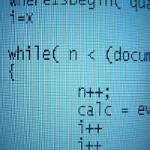How to Debug AI-Generated Code in 2025: GitHub Copilot and Tabnine
As AI-powered coding assistants like GitHub Copilot and Tabnine become more advanced, they are increasingly integrated into developers’ workflows. However, AI-generated code isn’t perfect, and debugging it requires a mix of traditional debugging skills and an understanding of how these tools work. Here’s a guide to debugging AI-generated code in 2025, tailored to tools like GitHub Copilot and Tabnine.
1. Understanding How AI Generates Code
Before diving into debugging, it’s important to understand how AI coding assistants work. GitHub Copilot, for example, is trained on billions of lines of public code and suggests snippets based on context, comments, and function names. Tabnine, on the other hand, uses deep learning models to predict and autocomplete code, often trained on your own codebase for personalized suggestions.
While these tools aim to save time, they can produce code that is inefficient, incorrect, or misaligned with your project’s architecture. For instance, AI might generate a Java method that looks correct but contains logical errors, security vulnerabilities, or performance issues.
2. Common Issues in AI-Generated Code
When working with AI-generated code, you’ll often encounter a few recurring problems:
- Logical Errors: The code might look correct but doesn’t work as intended. For example, a loop might run one too many or too few times, or a conditional statement might not cover all edge cases.
- Security Vulnerabilities: AI tools might suggest code with security flaws, such as hardcoded credentials or SQL injection vulnerabilities.
- Performance Issues: The generated code might be inefficient, with unnecessary nested loops or redundant API calls.
- Misaligned with Project Standards: The code might not follow your team’s coding conventions or design patterns, leading to inconsistencies.
3. Debugging Strategies for AI-Generated Code
Debugging AI-generated code requires a systematic approach. Here’s how you can do it effectively:
1. Review the Code Line by Line
Start by carefully reading the code to ensure it aligns with the intended functionality. For example, if GitHub Copilot generates a Java method to calculate the factorial of a number, review it for correctness:
1 2 3 4 5 6 7 | public int factorial(int n) { if (n == 0) { return 1; } else { return n * factorial(n - 1); }} |
At first glance, this looks correct, but what if n is negative? The method will enter infinite recursion. To fix this, add input validation:
01 02 03 04 05 06 07 08 09 10 | public int factorial(int n) { if (n < 0) { throw new IllegalArgumentException("Input must be a non-negative integer."); } if (n == 0) { return 1; } else { return n * factorial(n - 1); }} |
2. Use Automated Tools
Leverage tools to catch issues early. For example:
- Static Code Analysis: Use tools like SonarQube or Checkstyle to identify syntax errors, security vulnerabilities, and style issues.
- Unit Testing: Write unit tests to verify the correctness of the code. For the factorial method, you could use JUnit:
01 02 03 04 05 06 07 08 09 10 11 | import static org.junit.jupiter.api.Assertions.*;import org.junit.jupiter.api.Test;public class FactorialTest { @Test public void testFactorial() { assertEquals(1, factorial(0)); assertEquals(120, factorial(5)); assertThrows(IllegalArgumentException.class, () -> factorial(-1)); }} |
- Security Scanners: Use tools like Snyk to identify security vulnerabilities in your code.
3. Test in Isolation
Run the AI-generated code in a controlled environment to see how it behaves without affecting the rest of your project. Use a debugger to step through the code and inspect variables at each stage.
4. Refactor for Clarity and Efficiency
Simplify overly complex code and remove redundancies. For example, you could rewrite the factorial method iteratively to improve performance:
01 02 03 04 05 06 07 08 09 10 | public int factorial(int n) { if (n < 0) { throw new IllegalArgumentException("Input must be a non-negative integer."); } int result = 1; for (int i = 1; i <= n; i++) { result *= i; } return result;} |
5. Leverage AI for Debugging
Ask the AI to explain the generated code or suggest fixes. For example, you could prompt GitHub Copilot with, “How can I optimize this method?” or “Why is this loop here?”
4. Best Practices for Working with AI Coding Assistants
To minimize debugging efforts, follow these best practices when using GitHub Copilot and Tabnine:
- Provide Clear Context: Write detailed comments and function descriptions to guide the AI. Use meaningful variable and function names.
- Validate Suggestions: Don’t blindly accept AI-generated code. Always review and test it before integrating it into your project.
- Train the AI: If you’re using Tabnine, train the model on your codebase to improve the relevance of its suggestions.
- Collaborate with Your Team: Share knowledge about how to use AI tools effectively and establish coding standards to ensure consistency.
5. Real-World Example: Debugging AI-Generated Code
Let’s say Tabnine generates the following Java method to find the maximum value in an array:
1 2 3 4 5 6 7 8 9 | public int findMax(int[] array) { int max = array[0]; for (int i = 1; i < array.length; i++) { if (array[i] > max) { max = array[i]; } } return max;} |
Step 1: Review the Code
The code looks correct, but what if the array is empty? It will throw an ArrayIndexOutOfBoundsException. To fix this, add a check for empty arrays:
01 02 03 04 05 06 07 08 09 10 11 12 | public int findMax(int[] array) { if (array.length == 0) { throw new IllegalArgumentException("Array must not be empty."); } int max = array[0]; for (int i = 1; i < array.length; i++) { if (array[i] > max) { max = array[i]; } } return max;} |
Step 2: Write Unit Tests
Use JUnit to verify the method:
01 02 03 04 05 06 07 08 09 10 11 | import static org.junit.jupiter.api.Assertions.*;import org.junit.jupiter.api.Test;public class FindMaxTest { @Test public void testFindMax() { int[] array = {3, 5, 1, 4, 2}; assertEquals(5, findMax(array)); assertThrows(IllegalArgumentException.class, () -> findMax(new int[]{})); }} |
6. Tools and Resources for Debugging AI-Generated Code
Here are some tools and resources to help you debug AI-generated code effectively:
- Debugging Tools: Use IntelliJ IDEA Debugger or Eclipse Debugger to step through Java code and inspect variables.
- Testing Frameworks: Use JUnit for unit testing and Mockito for mocking dependencies.
- Security Tools: Use Snyk or OWASP Dependency-Check to identify security vulnerabilities.
- Learning Resources:
- GitHub Copilot Documentation: Official guide to using GitHub Copilot.
- Tabnine Documentation: Learn how to customize and use Tabnine effectively.
- OWASP Top Ten: A list of the most critical security risks to watch out for.
7. Conclusion
Debugging AI-generated code in 2025 requires a combination of traditional debugging skills and an understanding of how tools like GitHub Copilot and Tabnine work. By reviewing code carefully, using automated tools, and following best practices, you can ensure that AI-generated code is efficient, secure, and aligned with your project’s goals.
As AI continues to evolve, so will its capabilities—and so should your debugging strategies. Embrace these tools, but always remember: AI is your assistant, not your replacement. Happy coding! 🚀




